Guide to Wearable Fall Detection Devices
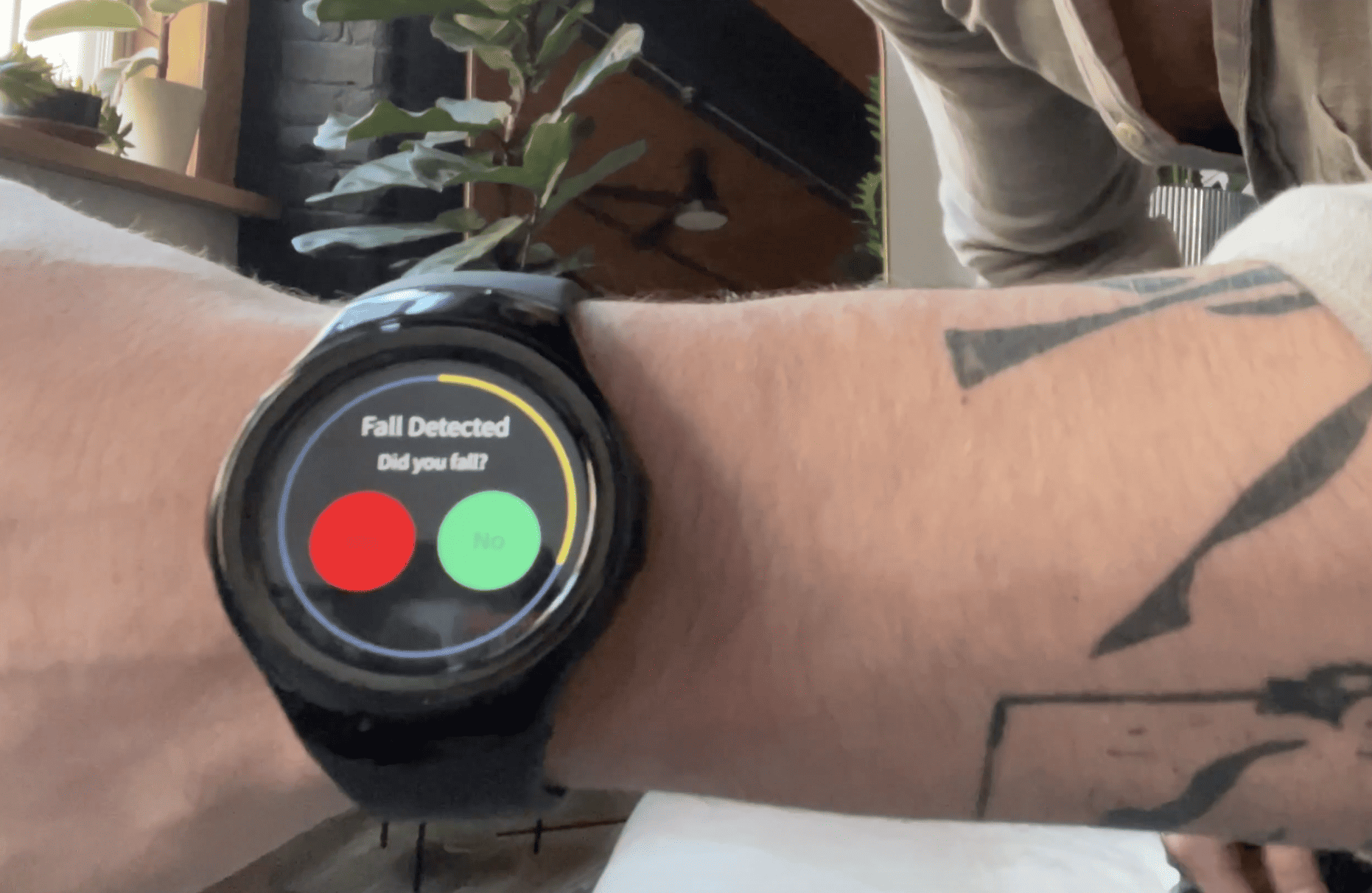
Falls are one of the most serious health risks for older adults. According to the Centers for Disease Control, one in four adults aged 65 and older falls each year, resulting in over 8 million falls requiring medical attention or limited activity for at least a day.1 For family caregivers, these statistics show the urgent need for reliable fall detection solutions.
Our team of experts has spent hundreds of hours testing dozens of fall detection devices over the years. Fall detection technology has come a long way in recent years. Instead of just basic pendants, we now have smart wearables that can tell the difference between everyday movements and a real fall. That means you get fewer false alarms, and the device is much better at knowing when you actually need help. In this guide, we’ll discuss our experience using fall detection devices, how they work, important things to note, and more!
How Do Wearable Fall Detection Devices Work?
Wearable fall-detection devices have many features that work together to accurately identify falls. The primary components include:
- Accelerometers that measure sudden changes in movement and impact
- Gyroscopes that detect orientation changes and rotational movement
- Barometric pressure sensors that monitor altitude changes during falls
- Heart rate monitors that track physiological responses to incidents
These sensors monitor movement patterns to distinguish between normal activities like sitting down quickly, and actual falls.
Detecting Falls and Sending Alerts
Most wearable devices use two main ways to tell if someone has fallen:
- Sudden movements: First, they look for sudden movements that go past a certain limit.
- Pattern recognition: Second, they use smart technology to recognize patterns that usually happen during a fall.
The best devices use both methods to double-check before sending an alert. When a wearable device detects a fall and decides to send an alert, it usually does a few things right away:
- First, it tries to contact an emergency response center or a list of pre-set contacts, like a family member or caregiver. This happens through the medical alert system’s built-in cellular connection or a paired smartphone. Some devices also give the person a few seconds to cancel the alert in case it was a false alarm.
- If the alert goes through, the responder will try to talk to the person through the device to see if they’re okay.
- If there’s no response, or if the person confirms they need help, they can dispatch emergency services to their location. Many medical alert devices use GPS to share the exact location, so help can arrive quickly.
Pro Tip: Look for devices that offer adjustable sensitivity settings, allowing customization based on your loved one’s activity level and mobility patterns.
Types of Wearable Fall Detection Devices
There are several different ways to wear fall detection devices, some of which are more discrete than others.
Medical Alert Pendants and Wristbands
Typically, traditional medical alert devices include automatic fall detection, along with help buttons that the user can press at any time. These devices feature 24/7 professional monitoring services, two-way communication, water-resistant designs for shower safety, and extended battery life from days to weeks.
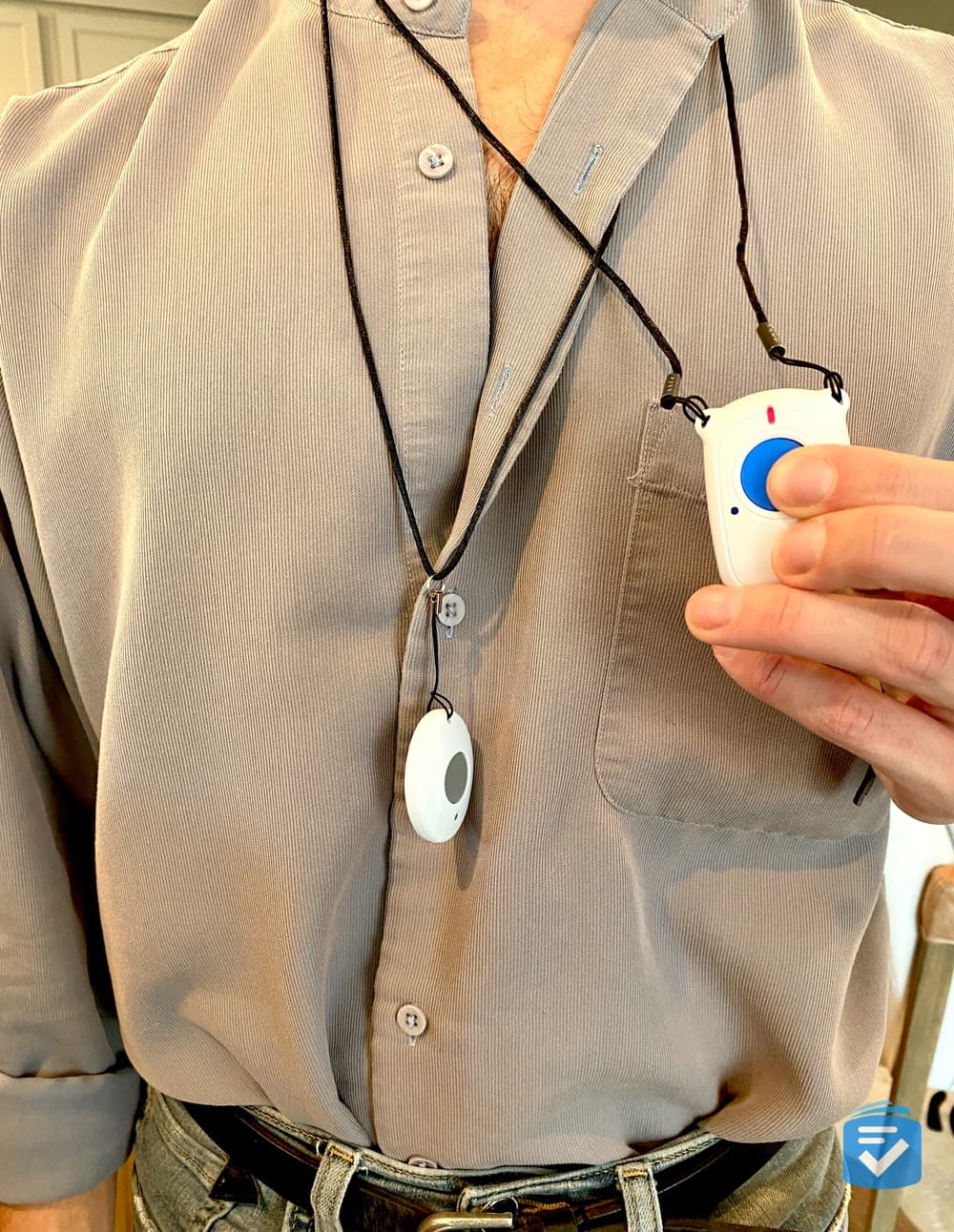
For comprehensive reviews of the best fall detection systems, read about our hands-on testing of the best fall detection devices. Or, if you want a less conspicuous device, consider medical alert bracelets.
Smartwatches with Fall Detection
Many popular smartwatches now have sophisticated fall detection features. For example, the Apple Watch Series 4 and later models can detect falls and automatically contact emergency services if the wearer doesn’t respond within one minute.
However, in our experience, seniors may find Apple Watches more difficult to use compared to medical alert smartwatches with simplified interfaces. Compare Apple Watches to medical alert systems directly to decide what’s best for you.
Research Note: Studies show that only 7 percent of fall detection studies test devices in real-world settings, making it crucial to choose devices with proven track records rather than just laboratory results.2 That’s why we test fall detection devices in the home and on the go, just as a real user would.
These devices can often connect to your smartphone with a mobile app, track your health, share your location, and let family check on you, even when they’re not around.
Key Features to Consider
If you’re in the market for a fall detection device, keep these factors top of mind.
Accuracy and False Alarm Rates
False alarms are fairly common with fall detection wearables, but some devices are better than others. After testing dozens of devices, we’ve found that the best fall detection features can detect around 80 to 95 percent of falls with false alarm rates below 10 percent.
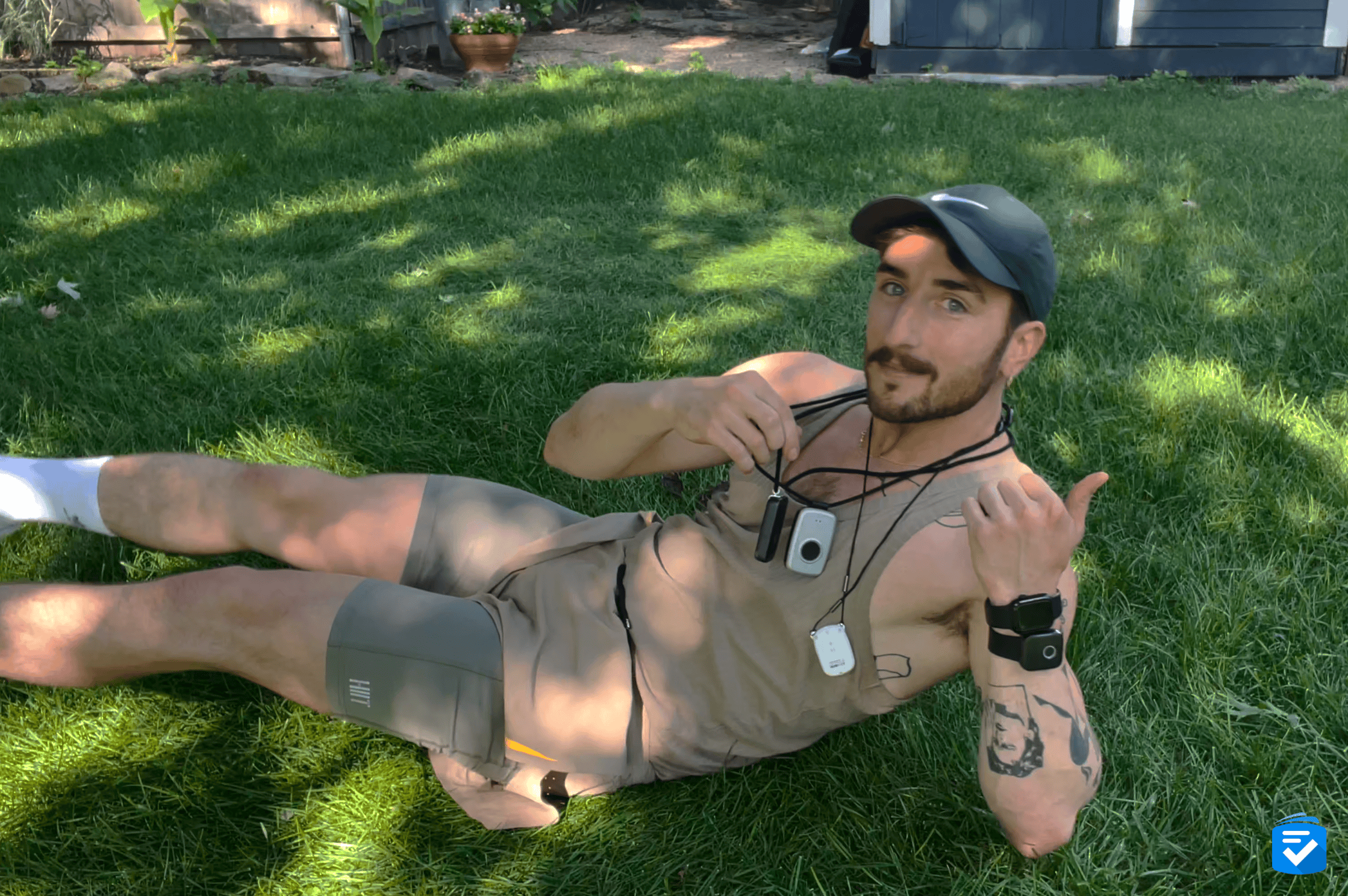
When you’re checking how accurate fall detection devices are, look at:
- Information from clinical tests and studies
- What real users say about how well they work in everyday life; we’d recommend checking out TrustPilot, Consumer Affairs, and the Better Business Bureau
- Whether you can adjust the devices’ sensitivity levels
- If the devices get better at detecting falls the more you use them
Battery Life and Charging Requirements
Fall detection devices last anywhere from a day to a week. Some advanced systems can last even longer. Below is a look at typical battery charging times:
| Device type | Typical battery life | Charging method |
|---|---|---|
| Medical alert pendants | 1-7 days | Charging dock |
| Smartwatches | 1-3 days | Magnetic charger |
| Specialized sensors | 7-30 days | USB charging |
Communication and Alert Systems
Good communication is key; when someone needs help, you want to be sure it arrives fast. Look for devices that can reach out in different ways, like using cellular, Wi-Fi, or even a landline as a backup. It also helps if the system lets you talk directly with responders, tracks your location accurately with GPS, and alerts the right people in the right order if you need help.
Keep in mind, professional monitoring services usually get you help more quickly than if you’re only reaching out to family or friends. On average, the pros can respond in about 30 to 60 seconds, while it might take several minutes for family contacts to notice and act.
The Best Fall Detection Devices
After trying out dozens of medical alert systems, we’ve found some our top picks for older adults. You can learn more about our favorites below.
Medical Alert Systems
Bay Alarm Medical: Bay Alarm Medical offers accurate fall detection. In our testing, it detected 70 percent of our falls. There are options for in-home and mobile, plus a smartwatch option. Read our Bay Alarm Medical review to learn more.
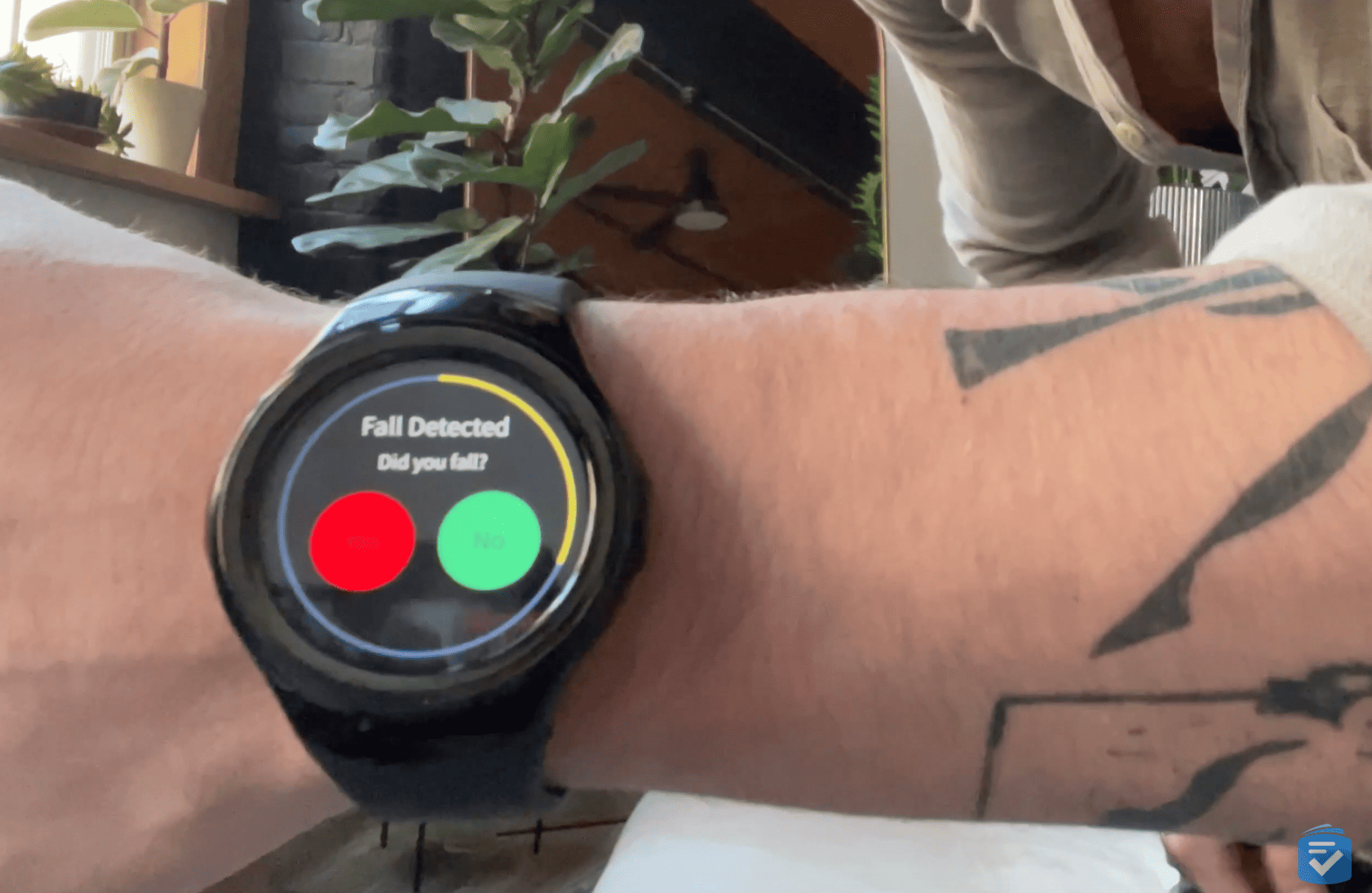
Medical Guardian: Medical Guardian offers both traditional and smartwatch-style devices with fall detection, providing flexibility for different user preferences. In our experience, it had the fastest response time of any medical alert system provider: our calls were answered in eight seconds flat! Check out our Medical Guardian review for all the details.

Consumer Smartwatches
We’ve tested the Apple Watch ourselves, and it really stands out when it comes to fall detection. Apple uses real-world fall data and smart algorithms to tell the difference between a hard fall and everyday movement. If it detects a fall and you don’t respond, it can automatically call emergency services.
It also connects with your iPhone’s health app to track important health info, and with Family Sharing, loved ones can keep an eye on things from afar. It’s packed with features, but still easy enough to use every day, and we’ve seen firsthand how it can make a real difference.
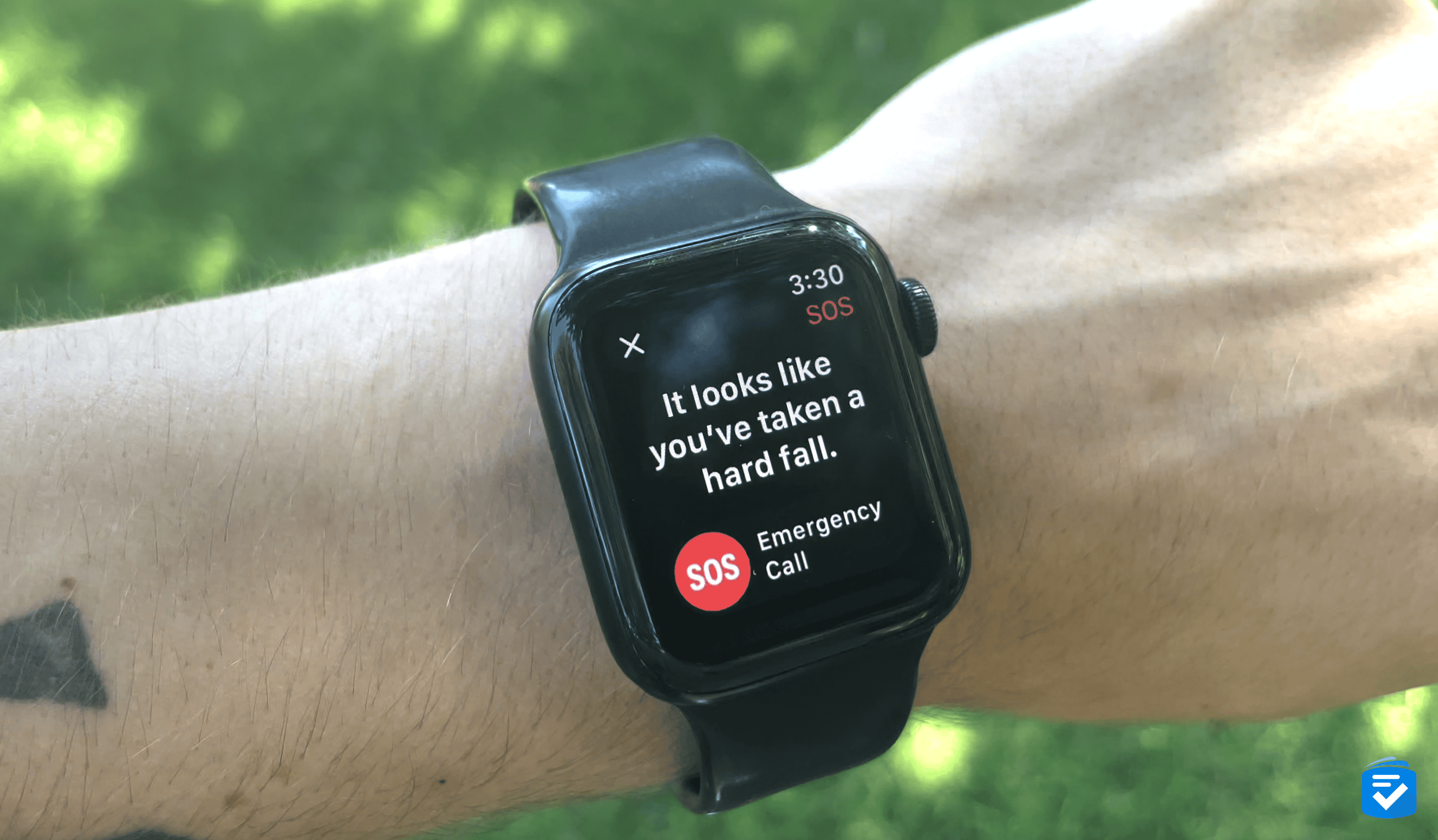
One big difference we noticed is that, unlike medical alert systems, the Apple Watch doesn’t connect with a monitoring center, but instead, with 911 directly. This meant that the police didn’t have our medical or location information, unlike a medical alert system. However, the watch’s fitness tracking was much better than medical alert smartwatches, tracking our:
- Heart rate
- Steps
- Distance
- Calories burned
If fitness and sleep tracking are important to you, you’ll appreciate the detailed data that the Apple Watch collects.
How Much Does Fall Detection Cost?
Costs can vary widely depending on the brand and level of advanced features.
Device Costs
Let’s take a look at average costs for medical alert devices. Initial devices can cost:
- Basic medical alert pendants: $50 to $200
- Smartwatches: $150 to $800
Monthly Fees
On a monthly basis, expect to pay:
- Professional monitoring services: $20 to $60
- Cellular connectivity (smartwatches only): $20 to $40
Worried about costs? Check out our guide to the best affordable medical alert systems.
Insurance Coverage
Typically, Medicare doesn’t cover wearable fall detection devices or their monitoring services, as they’re considered preventive rather than treatment-related equipment. However, Medicaid (in certain states), private insurance plans, Health Savings Accounts (HSAs), and Medicare Advantage plans may offer some coverage.
Veterans may qualify for coverage through VA benefits, and some employers offer health benefits that include fall detection devices.
Is Fall Detection Worth the Cost?
A study published in the Journal of the American Medical Association (JAMA) found that the total average cost of a fall was $64,526 regardless of the level of injury.3 Falls can result in injuries and in the worst cases, deaths.
A fall detection device that costs, say $150, plus $40 per month, is worth it to make sure older adults get help as soon as possible, though only safety measures can prevent falls from happening in the first place.
Some people are more at risk of falls than others. The likelihood of falls increases with age, not to mention vision and physical impairments. A fall detection device is an affordable way to make sure older adults get the help they need in case of a fall.
Getting Set Up and Using Your Device
Getting your device set up the right way is important. It’s the key to making sure it works well and feels comfortable to use. Here are the first steps to take to start using a fall detection device:
- Register your device with the monitoring service.
- Add emergency contacts.
- Check that the GPS finds your location accurately.
- Run a quick communication test with the monitoring center.
- Make sure you (and anyone helping you) know how to wear it properly, keep it charged, trigger an alert if you need help, and cancel an alert if it goes off by accident.
- Test it regularly to make sure everything’s working as it should.
Troubleshooting
A couple of common issues to watch out for:
- False alarms: False alarms aren’t unusual, so don’t be alarmed if you experience a few as you get used to wearing your device and learn what triggers it.
- Connectivity issues: Connection problems can pop up, but regular testing will help you catch and fix them early, so you know your device is ready when you need it.
By following these steps, you’ll get the most out of your fall detection device and help make sure it’s there for you when it matters most.
Final Thoughts
Spending a little more on a reliable fall detection device is usually worth it when you think about how much it can help prevent serious problems from an unnoticed fall. It’s a good idea to talk things over with your doctor, try out different devices if you can, and include your loved one in picking the right one.
Getting this kind of technology isn’t just about safety, it’s about giving everyone a little more peace of mind. It helps older adults stay independent and enjoy life, and lets families and caregivers relax a bit, knowing help is there if it’s ever needed.
Frequently Asked Questions
-
How accurate are wearable fall detection devices?
Fall detection is around 80 to 95 percent accurate in clinical testing, though real-world performance will vary based on individual factors and device quality.
-
Will Medicare cover the cost?
Generally, no, Medicare does not cover the cost of wearable fall detection devices or monitoring services, as they’re considered preventive equipment and not durable medical equipment.
-
Can devices work if someone is unconscious?
Yes, automatic fall detection devices are specifically designed to work when users cannot press their help button.
-
How long do batteries last?
Battery life varies from one to three days for smartwatches to five to 30 days for medical alert devices.
-
Do devices work outside the home?
Most fall detection devices with cellular connectivity work anywhere with cell tower coverage. However, in-home devices based on landlines will not work outside of the home.
